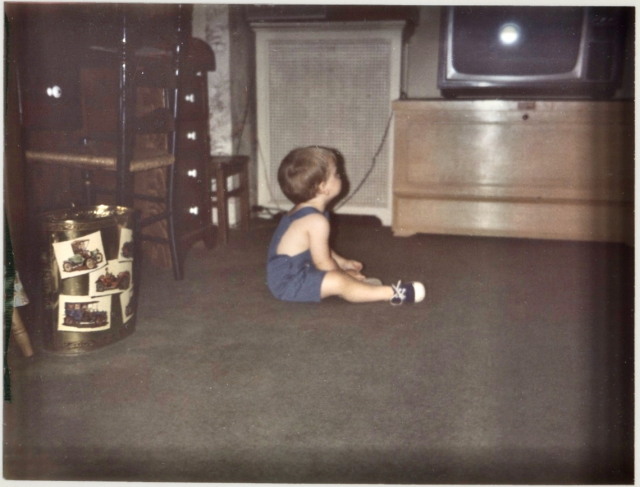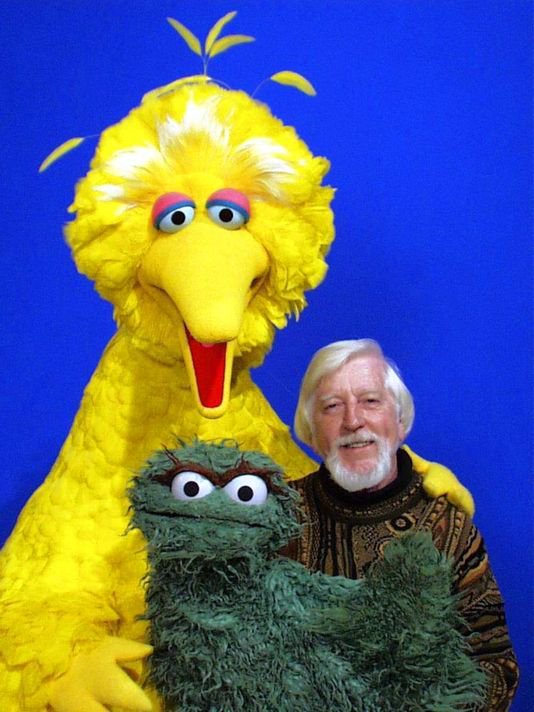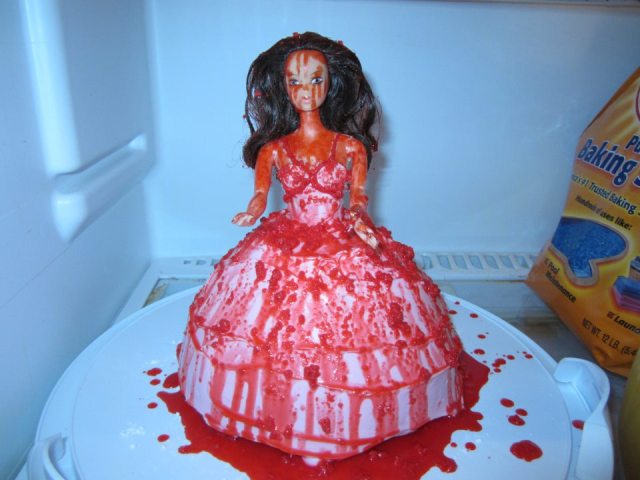 In the early years of the 20th Century, New York City was the Vaudeville capital of America, with a collection of popular and peculiar performers plying their trade live on stage. A few icons of that era found fame in other mediums, but most were forgotten after Hollywood made the transition to “Talking Pictures.” End of story. Or, maybe not.
In the early years of the 20th Century, New York City was the Vaudeville capital of America, with a collection of popular and peculiar performers plying their trade live on stage. A few icons of that era found fame in other mediums, but most were forgotten after Hollywood made the transition to “Talking Pictures.” End of story. Or, maybe not.
On December 5, Turner Classic Movies cracks open the time tunnel with a program of 63 shorts from the 1920s and ’30s featuring famous and not-so-famous personalities from Vaudeville’s dying days. Produced by Warner Bros. using the Vitaphone sound-on-disc process — film projected in sync with a record played on a turntable — these shorts are some of the earliest surviving Talkies, but the majority had been separated from their soundtracks and “lost” to audiences for decades.
Cue Ron Hutchinson. The East Orange, New Jersey native co-founded the Vitaphone Project in 1991 with the mission of reuniting 16-inch shellac soundtrack discs with 35mm picture elements (most archived at the Library of Congress), thus restoring history for a new generation.
“Little did we know that we would find more than 6,000 of those discs in private hands and have been involved with the restoration of more than 125 shorts and a dozen features so far, with 40 more in the pipeline,” Hutchinson said at Film Forum in New York at the premiere screening of seven new restorations in October.
In the audience at Film Forum that night were two relatives of Vaudeville performers who starred in Vitaphone shorts, enjoying their rediscovery along with the rest of the packed house.
“Without the restoration, these people would be totally forgotten,” Hutchinson said. “They were laying mute in the archives for decades and they’re finally being seen again.”

Ron Hutchinson with the granddaughter of Vaudevillian Zelda Santley at Film Forum on Oct 25 (photo by Will)
The Vitaphone process was also used for the earliest full-length sound features, initially for music and sound effects scores and, beginning with THE JAZZ SINGER in 1927, for movies with synchronized dialogue. Five of those features are included in TCM’s 24-hour Vitaphone salute, including the delightful WHY BE GOOD (1929) with Colleen Moore at 11 p.m. (ET). Hutchinson will introduce the TCM program beginning at 8 p.m. (ET) with host Ben Mankiewicz in celebration of Vitaphone’s 90th anniversary and the 25th year of the Vitaphone project.
And the good news doesn’t stop there.
The success of the Vitaphone Project’s unique partnership between a rightsholder (Warner Bros), archives (UCLA and the Library of Congress), and private individuals has inspired other studios to “get religion” when it comes to restoration, Hutchinson said. Chief among those is Universal, which has recently brought new restorations of the Marx Bros. first five films to market, along with the glorious KING OF JAZZ (which I wrote about here).
“We’re working with them on a number of things including the long unseen Universal shorts, which are very similar to Vitaphone shorts,” Hutchinson said. “Unlike other studios, Universal never released any of their shorts to television or the home market. So they truly have been unseen for over 80 years.”
If you can’t take the day off from work on Monday, I recommend you park yourself in front of the TV between 8 and 11 p.m. (ET) for 16 of the most memorable shorts you’ve ever seen. Best among these is the comedy team of Shaw and Lee in THE BEAU BRUMMELS (1928) in the 8 p.m. block and Conlin and Glass in SHARPS AND FLATS (1928) in the 9:45 p.m. block. I’ve seen both of these with audiences a number of times and they kill every time.
Or better yet, just take the day off and watch TCM.
For more information on the Vitaphone Project, click here. For more coverage of the TCM program, visit Trav SD’s excellent blog. A complete schedule of TCM’s 24-hour salute to Vitaphone follows, courtesy of Ron Hutchinson. Note: your cable listings will probably be wrong, so don’t try to set your DVR for a single short. Record everything in that block to be safe!
6:00 AM Before They Were Stars – 6 shorts
Paree, Paree (1934) (Bob Hope)
The All Girl Revue (1939) (June Allyson)
Art Trouble (1934) (James Stewart)
Seeing Red (1939) (Red Skelton)
Success (1931) (Jack Haley)
Ups and Downs (1937) (Phil Silvers, June Allyson & Hal LeRoy)
 8:15 AM THE BETTER OLE’ (1926)
8:15 AM THE BETTER OLE’ (1926)
In this silent film, friends face misadventures during WW I.
Dir: Charles Reisner Cast: Sydney Chaplin , Doris Hill , Harold Goodwin .
BW-95 mins
10:15 AM Vitaphone in Technicolor – 3 shorts
Good Morning, Eve (1934)
Out Where the Stars Begin (1938)
Okay, Jose (1935)
11:30 AM Vitaphone Mini Musicals – 5 shorts
Soft Drinks and Sweet Music (1934)
King for a Day (1934)
Private Lessons (1933)
20,000 Cheers For a Chain Gang (1933)
The Winnah! (1934)
1:45 PM Vitaphone Bands – 10 shorts
The Yacht Party (1932)
Barber Shop Blues (1933)
Johnny Green and His Orchestra (1935)
Jimmie Lunceford and His Orchestra (1937)
Swing Cats Jamboree (1938)
Cab Calloway and His Orchestra (1937)
Gus Arnheim and His Cocoanut Grove Orchestra (1928)
The Ingenues (1928)
Harry Reser and His Eskimos (1936)
Mills Blue Rhythm Band (1933)
3:45 PM Vitaphone Potporri – 10 shorts
Hip Action (1933)
Home Run on the Keys (1936)
Believe It or Not #1 (1931)
Trouble in Toyland (1935)
All Colored Vaudeville (1935)
Buzzin’ Around (1933)
Rambling Round Radio Row #3 (1933)
Hot News Margie (1933)
Smash Your Baggage (’33)
All-Star Vaudeville (’35)
 6:00 PM THE JAZZ SINGER (1927)
6:00 PM THE JAZZ SINGER (1927)
A cantor’s son breaks with family tradition to go into show business.
Dir: Alan Crosland Cast: Al Jolson , May McAvoy , Warner Oland .
BW-96 mins
PLUS The Voice That Thrilled The World (1943) 19 mins
RON AND BEN MANKIEWICZ DO INTRO’s THROUGH THE 12:30 AM EST BLOCK
8:00 PM Vitaphone Shorts Primetime Block #1 – 8 shorts
Will H. Hays Introduces Vitaphone (1926)
Georgie Price In ‘Don’t Get Nervous’ (1929)
Horace Heidt And His Californans (1929)
Shaw And Lee, The Beau Brummels (1928)
Baby Rose Marie, The Child Wonder (1929)
Mayer & Evans, The Cowboy And The Girl (1928)
Trixie Friganza In ‘My Bag ‘O Trix’ (’29)
Hazel Green And Company (1928)
9:45 PM Vitaphone Shorts Primetime Block #2 – 8 shorts
Burns And Allen In ‘Lambchops’ (1929)
The Foy Family In ‘Chips Off The Old Block’ (1928)
Conlin And Glass In ‘Sharps And Flats’ (1928)
The Revelers (1927)
Born And Lawrence, The Country Gentlemen (1928)
Chaz Chase, The Unique Comedian (1928)
Eddie White In ‘I Thank You’ (1928)
Joe Frisco In ‘The Happy Hottentots (1930)
11:00 PM WHY BE GOOD (1929)
A virtuous flapper gets into a compromising situation with the boss’s son.
Dir: William A. Seiter Cast: Colleen Moore , Neil Hamilton , Bodil Rosing .
BW-81 mins
12:30 AM Vitaphone Shorts Primetime Block #3 – 6 shorts
Dick Rich And His Syncho Symphonists (1928)
Brennan And Butler In ‘You Don’t Know The Half Of It’ (1929)
Jack Waldron In ‘A Breath Of Broadway (1928)
Ben Bernie And His Orchestra (1930)
Arthur Pat West In ‘Ship Ahoy’ (1928)
Harry Fox And His Six American Beauties (1929)
 1:45 AM SHOWGIRL IN HOLLYWOOD (1930)
1:45 AM SHOWGIRL IN HOLLYWOOD (1930)
A Broadway songbird goes to Hollywood in search of screen stardom.
Dir: Mervyn LeRoy Cast: Alice White, Jack Mulhall, Blanche Sweet .
BW-78 mins
3:15 AM Vitaphone Shorts Primetime Block #4 – 6 shorts
Harry Wayman’s Debutantes (1928)
Shaw And Lee In ‘Going Places (1930)
Tal Henry And His North Carolinians (1929)
Jans And Whalen, Two Good Boys Gone Wrong (1929)
Florence Brady In ‘A Cycle Of Songs’ (1928)
Blossom Seeley And Bennie Fields (1927)
6:00 AM DON JUAN (1926)
In this silent film, the legendary lover fights to survive intrigue in the court of the Borgias.
Dir: Alan Crosland Cast: John Barrymore , Mary Astor , Willard Louis .
BW-112 mins

 I grew up watching old movies on television.
I grew up watching old movies on television.

 What’s been your coping mechanism during the pandemic? For me, it’s been silent movies.
What’s been your coping mechanism during the pandemic? For me, it’s been silent movies. 


 Caroll Spinney
Caroll Spinney 
 I’m proud and honored to be the very first guest on
I’m proud and honored to be the very first guest on 























